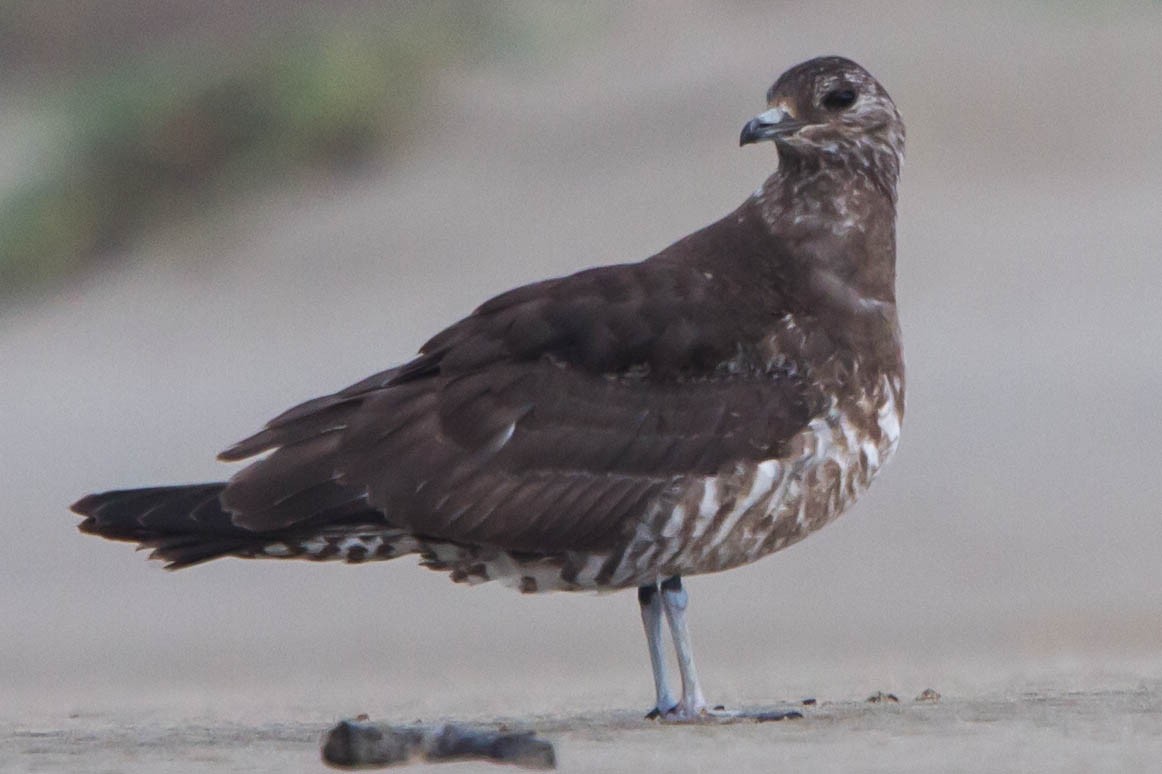Parasitic Jaeger
A species of Jaegers, Also known as Arctic Jaeger, Gull-chaser Scientific name : Stercorarius parasiticus Genus : Jaegers
Parasitic Jaeger, A species of Jaegers
Also known as:
Arctic Jaeger, Gull-chaser
Botanical name: Stercorarius parasiticus
Genus: Jaegers
Content
Description People often ask General Info
Description
Identification is complicated by similarities to long-tailed jaeger and pomarine jaeger, and the existence of three colour morphs. Small for a skua, the parasitic jaeger measures 41–48 cm (16–19 in) in length, 107–125 cm (42–49 in) in wingspan and weighs 300–650 g (0.66–1.43 lb). The tail streamer of the breeding adult accounts for about 7 cm (2.8 in) of their length. Light-morph adults have a brown back, mainly white underparts and dark primary wing feathers with a white "flash". The head and neck are yellowish-white with a black cap and there is a pointed central tail projection. Dark-morph adults are dark brown, and intermediate-phase birds are dark with somewhat paler underparts, head and neck. All morphs have the white wing flash. Identification of juveniles is even more problematic, and it is difficult to separate parasitic jaegers from long-tailed jaegers. Parasitic jaegers are bulkier, shorter-winged, and less tern-like than long-tailed jaegers. They are usually warmer toned, with browner shades, rather than grey. However, they show the same wide range of plumage variation. The flight is more falcon-like. The typical call of these birds is a nasal mewing sound, repeated a few times in display. Their alarm call is a shorter sound. 
Size
38-53 cm (15-21 in)
Colors
Black
Gray
White
Life Expectancy
18 years
Nest Placement
Ground
Clutch Size
1 - 2 eggs
Incubation Period
1 brood
Number of Broods
24 - 29 days
Nestling Period
2 days
Feeding Habits
Parasitic Jaeger's diet varies based on location and season, consisting of shorebirds, waterfowl, terns, songbirds, rodents, insects, eggs, chicks, berries, carrion, and offal. Predominantly a kleptoparasite, especially during non-breeding seasons, parasitic Jaeger forces seabirds, notably gulls and terns, to relinquish their prey.
Habitat
Parasitic Jaeger typically resides in marine environments, favoring open ocean and coastal bays. Rarely, they may be spotted around lakes. During the breeding season, parasitic Jaeger selects the Arctic tundra, where it nests in a habitat characterized by low vegetation and a harsh, cold climate. Outside the breeding period, parasitic Jaeger is pelagic, spending a significant amount of time at sea, often far from land.
Nest Behavior
The nesting period for parasitic Jaeger involves pressing down surrounding vegetation to shape the nest. Egg-laying occurs once annually, followed by dedicated parental care for both eggs and chicks.
Nest Characteristics
Parasitic Jaeger creates ground nests on slight elevations in tundra areas. Nests are simple depressions or hollows, sometimes lined with grass, twigs, or lichens.
Dite type
Omnivorous
People often ask
General Info
Feeding Habits
Bird food type
Sounds
Call
Recording location: United States
Behavior
Parasitic Jaeger display remarkable aerial skills, predominantly sustaining themselves through kleptoparasitism – energetically chasing other seabirds until they relinquish their prey. With strong pair bonds, they tend to maintain these partnerships across multiple seasons, provided both individuals survive and revisit their breeding territories. Post-breeding, pairs disperse, leading solitary lives until they reconvene for the next reproductive cycle. This behavior underlines a lifestyle deeply intertwined with both their ecological niche and the cyclical nature of their seasonal gatherings.
Species Status
In 2018, Stercorarius parasiticus was regionally uplisted to Endangered in Iceland, from Least Concern in 2000, after their numbers declined drastically in the early 2000s. 
Scientific Classification
Phylum
Chordates Class
Birds Order
Shorebirds Family
Skuas and jaegers Genus
Jaegers Species
Parasitic Jaeger 